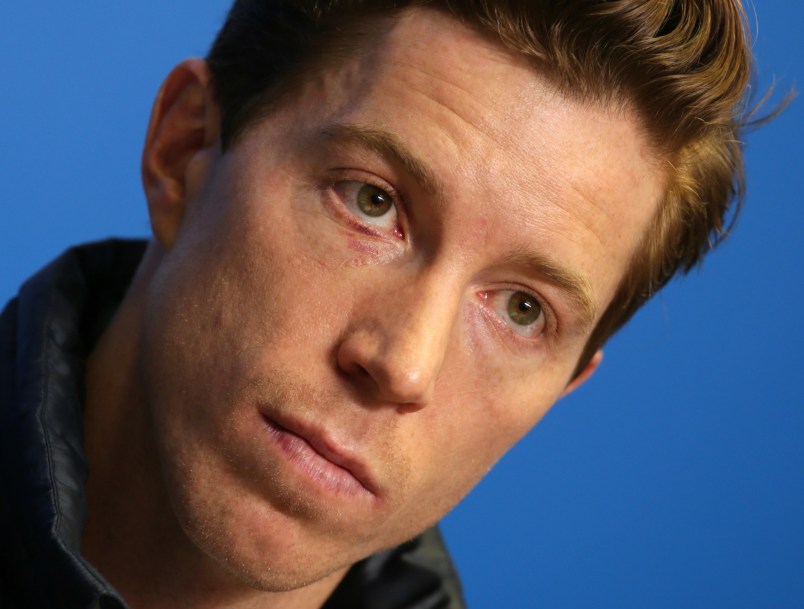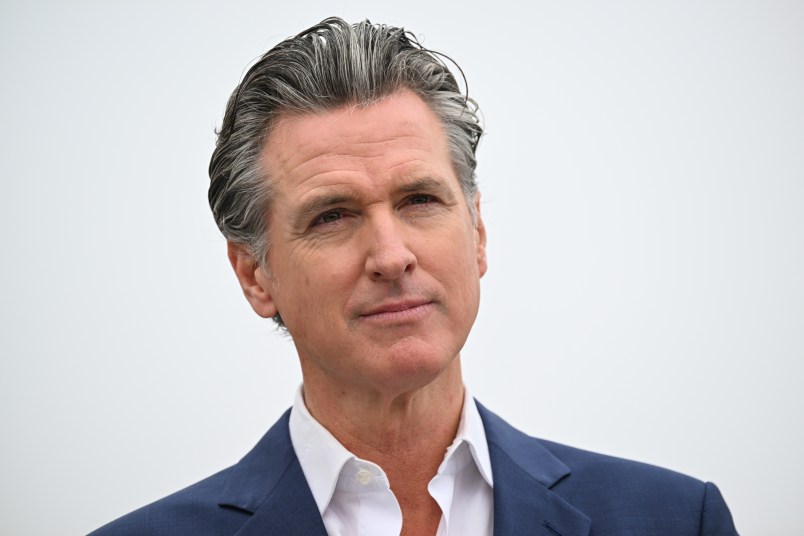KRASNAYA POLYANA, Russia (AP) — Shaun White jammed his wrist on one jump and watched the world’s best snowboarders join him in tumbling down the supersized, super-scary Olympic slopestyle course.
Quickly, his choice became clear: Time to step away from the danger, and give himself a better chance in the event he knows he can win.
The world’s most famous snowboarder pulled out of the new Olympic event Wednesday, saying that after much deliberation, he has decided to bypass a chance at winning two gold medals at these games and instead concentrate on the halfpipe, where he’ll have a chance to win his third straight title next week.
“With the practice runs I have taken, even after course modifications and watching fellow athletes get hurt, the potential risk of injury is a bit too much for me to gamble my other Olympics goals on,” White said in a statement.
The world’s most decorated rider in a sport known for its risk-takers, White’s decision was a stunner that dealt yet another blow to the still-to-start Sochi Games. They have been wracked by security threats and political dust-ups, along with the loss of at least one other headliner, injured American skier Lindsey Vonn.
White isn’t leaving, but his departure from an event that was essentially introduced at the Olympics this year to take advantage of his star power certainly can’t make the folks at the IOC or NBC too happy.
“He’s a notable person and he probably would have brought more viewers to slopestyle,” said Nick Goepper, an American who competes in the skiing version of the event.
IOC spokesman Mark Adams downplayed the idea that the course is too dangerous.
“I don’t think that’s an issue,” he said. “A lot of the athletes have said they’re very happy, they like the venue.”
Slopestyle qualifying starts Thursday, the day before the opening ceremony.
Snowboarding’s newest and most-hyped Olympic event is a judged sport — a speed-packed trip down the mountain, filled with rails, bumps and, most notably, steeply angled jumps that allow riders to flip two, sometimes three times, before landing. White hurt his wrist on one of the takeoff ramps, which were built “kind of obnoxiously tall,” according to one top rider, Canadian Mark McMorris.
White, who had already hurt his shoulder and ankle in the lead-up to the Olympics, deemed his latest injury — the jammed wrist — as nothing serious and said reports about it were overblown. But he said there remained serious issues with the slopestyle course.
“There are definitely concerns about the course,” he said. “It’s been interesting to see how it’s developed and changed over the past couple days. The big question is if it will continue to change. Because every day, they have riders meetings and they give feedback. Sometimes there’s changes, sometimes there’s not.”
Reaction to White’s decision came from several corners, not all of it positive.
“Mr. White… It’s easy to find excuses to pull out of a contest when you think you can’t win,” said Canadian rider Sebastian Toutant in a tweet that was later deleted.
Maybe so, but White certainly wasn’t alone in questioning the course.
Australian Torah Bright, the defending women’s halfpipe champion who is trying to compete in three events this year — halfpipe, slopestyle and a racer’s version called snowboardcross — also described an overly treacherous few days of training.
“We’re here as the world’s best snowboarders,” she told The Associated Press. “Too bad we don’t have a world-class course. The craftsmanship doesn’t match the world-class athletes that are here.”
Out of slopestyle, White will now focus solely on next Tuesday’s contest in the halfpipe, which is essentially a hollowed-out ice shell with 22-foot (7-meter) sidewalls. There is danger there, but unlike slopestyle, it’s based mostly on the types of head-over-heels tricks the riders try and not the setup of the pipe.
In a news conference about an hour before he gave first word of his decision to the “Today” show, White was asked whether halfpipe was more important to him.
“For me, I definitely feel the halfpipe carries a bit more weight, a bit more pressure. I guess that’s fair enough to say,” he said.
He is favored to become the first male American to win three straight golds in the Winter Games.
His prospects for slopestyle, on the other hand, were uncertain. He’s the five-time Winter X Games champion, though he more or less gave up the event about five years ago to focus solely on the halfpipe. He hurt his ankle on the halfpipe in the season’s first Olympic qualifier, then bashed his shoulder during a nasty fall in slopestyle about a month later.
He pulled out of events, changed his mind a few times about the X Games — considered the biggest snowboarding event outside of the Olympics — before skipping that, as well. In all, it has been a hectic lead-up period as he tried to deal with both events, and it didn’t stop once he reached Russia. The slopestyle final is set for Saturday, which would cost him the first day of practice on the halfpipe.
“It’s tough juggling both events,” White said. “Definitely not easy. It’s something that’s been talked about quite a bit. Losing a day of practice is a serious thing, especially with a new course and the challenges I’d face in slopestyle.”
He said watching the injuries pile up on the course didn’t build much confidence.
Another top rider, Torstein Horgmo of Norway, was forced out after breaking his collarbone during practice Monday. On Tuesday, Finnish rider Marika Enne was carted off the course with a concussion.
There were dozens of other less-serious flips and spills.
Many riders said the dangers of the course were being overblown — “There’s no way this course is too dangerous,” American Sage Kotsenburg insisted.
But White and Bright are not alone in criticizing the setup.
“It’s a little intense, a little challenging,” said American rider Jamie Anderson, a gold-medal favorite on the women’s side. “The jumps are still a little weird. I’m having a questionable time getting used to them.”
While the other riders might breathe a little easier knowing one of their main competitors is out of the way, White understands his place in the sport and the gravity of his decision.
“Not one I take lightly,” he said. “I know how much effort everyone has put into holding the slopestyle event for the first time in Olympic history — a history I had planned on being part of.”
___
AP Sports Writer Will Graves contributed to this report.
Copyright 2014 The Associated Press. All rights reserved. This material may not be published, broadcast, rewritten or redistributed.










